Complete Solutions to Chemical Properties Of Alkanes of chapter HYDROCARBONS of Class 11 book with complete answers and questions
| Class 11 | CHEMISTRY |
| Chapter | HYDROCARBONS |
| A2Z | Chemical Properties Of Alkanes |
| Number Of Questions | 97 |
| Academic Year | 2023-24 |
What is the major monobromination product in the following reaction `?`
 00:53View Solution
00:53View SolutionThe hymolytic fission of hydrocarbon results in the formation of
00:57View SolutionThe relative reactivity of `1^(@)H,2^(@)H` and `3^(@)H` in bromination reaction has been found to be `: 82: 1600` respectively. In the reaction.
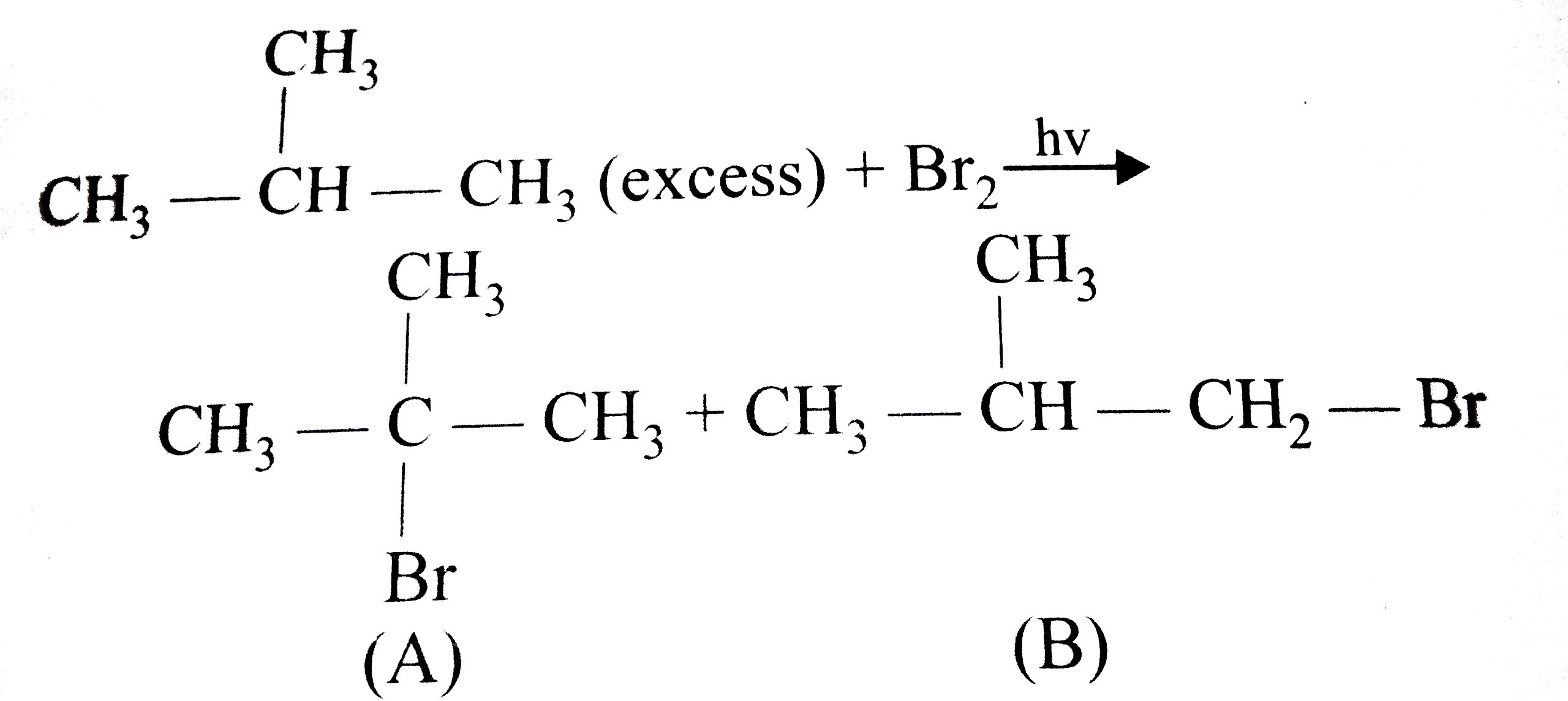
The percentage yields of the products `(A)` and `(B)` respectively are expected to be01:50View SolutionHalogenation of alkanes is an example of
01:11View SolutionWhat is the major bromination product in the following reaction ?
`CH_(3)-CH=CH-CH_(3)+Br overset(hv)rarr`02:29View SolutionChlorination of an alkane involves the attack of
01:24View SolutionWhen `n-` butane is heated iin the presence of `AlCl_(3)HCl` it will be converted into
03:59View SolutionWhat is true about the reaction given below ?
`CH_(3)-CH=CH-CH_(3)+CH_(2)I_(2)overset(Zn-C u)underset(E t_(2)O)rarr`04:13View SolutionThe reactivity of hydrogen atoms attached to carbon atom in the halogenatio of an alkane has the order `:`
02:08View SolutionWhich of the following is oxidised by `KMnO_(4)`?
02:40View SolutionIn which of the following pairs, the bromination of first member is easier than the second member ?
02:39View SolutionThe addition of tetraethyl lead to petrol
01:57View SolutionWhich of the following cannot be considered as a step of mechanism in chain reaction of methane with `Cl_(2)`?
02:44View SolutionWhich of the following has maximum boiling point ?
02:19View SolutionDuring clhorination of methane to methyl chloride, the propagation step is represented by
01:38View Solution`BrCH_(2)-CH_(2)CH_(2)Br` reacts with `Na` in the presence of ether at `100^(@)C` to produce
01:22View SolutionWhich of the following is not an endothermic reaction ?
02:06View SolutionMethane reacts with excess of chlorine in diffused sunlight to give the final product as
01:21View SolutionA mixture of propene and methane is obtained by the cracking of
02:57View SolutionA gaeous hydrocation `'X'` on reaction with bromine in light forms a mixture of two monbromo alkanes and `HBr.` The hydrocarbon `'X'` is `:`
08:12View SolutionThe final product of complete oxidation of hydrocarbons is
01:03View SolutionThe appropriate reagent for the transformation
 03:10View Solution
03:10View SolutionThe number of monochloro derivatives of isohexane is `(` Only structural isomers `)`
01:58View SolutionWhich of the following represents the most oxidized form of hydrocarbon ?
01:10View SolutionIodination of an alkanae is carried out in presence of
01:24View SolutionWhat is the chief product obtained when `n-`butane is treated with `Br_(2)` in the presence of light at `130^(@)C`?
04:02View SolutionA sample of petrol is a mixture of `30% n-` heptane and `70%` iso`-` octane . The sample has octane number
01:44View SolutionThe maximum ease of abstraction of a hydrogen atom by a chlorine atom is shown by
07:42View SolutionPropene on reaction with methylen iodide in presence of `Zn-Cu `couple gives `:`
02:21View SolutionFor the given reaction how many monohalo products are optically active ( all isomers ) `:`
`CH_(3)-underset(" "CH_(3))underset(|)overset(" "CH_(3))overset(|)(C)-CH_(2)-overset(" "CH_(3))overset(|)(CH)-CH_(3) overset(Br_(2)//hv)(rarr)`04:54View SolutionGasoline has composition
00:56View SolutionWhich of the following statement is correct in relation to the halogenation of alkane ?
01:53View SolutionOf the five isomeric hexanes, the isomer which can give two monochlorinated compounds is
14:03View SolutionThe number of possibel enantiomeric paira that can be produced during monochlorination of 2-methyl butane is :
02:29View SolutionWhich statement is incorrect about free radical halogenation of alkanes ?
03:36View SolutionWhich of the following is correct potential energy diagram for the given chain propagation step ?
`CH_(30-H+F^(.) rarr overset(.)(C)H_(3)+H-F Delta H^(@)=-134 Kj//mol`01:48View Solution and
and
`A` and `B` are03:54View SolutionNumber of isomers which can be theoreticaly obtained on monochlorination of `2-` methylbutane is `:`
01:41View SolutionWhich of the following compounds will lose optica activity after the reaction ?
07:09View Solutionsec`-` Butyl chloride on boiling with alc. `KOH` gives `…………` as the main product.
01:45View SolutionIn the above reaction if we take methylen chloride and isopropylidene cloride then products are
01:52View SolutionAn alkene is formed from a carbocation by
00:56View SolutionConsider the following reaction.
 Alkene(s)
Alkene(s)
The correct statement concerning product of the above reaction is02:32View SolutionEthylene may be obtained by dehydration of which of the following with concentrated `H_(2)SO_(4)` at `160-170^(@)C`
01:33View SolutionWhen `3,3-`dimethyl`-2-`butanol is heated with `H_(2)SO_(4)` the major product obtained is
02:52View SolutionAlcoholic solution of caustic potash is a specific reagent for
02:10View SolutionIsopropyl alcohol is obtained by reacting which of the following alknes with conc. `H_(2)SO_(4)` and `H_(2)O`
03:11View SolutionConsider the reaction
`[CH_(3)CH_(2)CH_(2)-underset(CH_(3))underset(|)overset(CH_(3))overset(|)(""^(o+)(N))-CH_(2)CH_(3)]OH^(-)overset("Heat")(to)`
Which of the following is formed in major amount ?03:19View Solution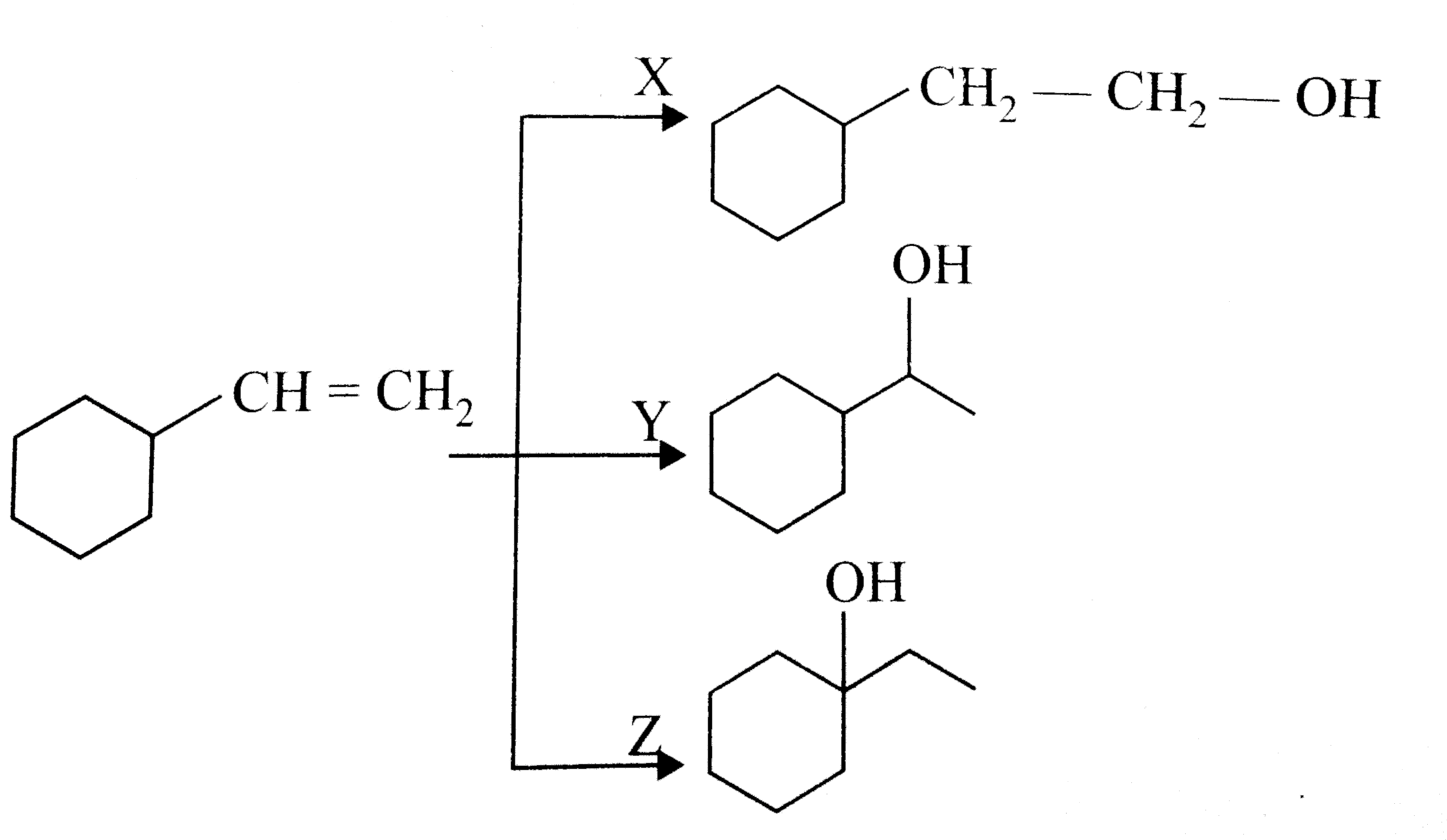
`X,Y,Z` reaction are `:`06:42View SolutionWhich of the following reactions produces an alkene ?
03:13View SolutionWhat is the major product of the reaction given below?
View SolutionA mixture of `1-`chloropropane and `2-`chloropropane when treated with alcoholic `KOH`, it gives
02:37View SolutionThe synthesis of ethene from electrolysis of an aqueous solution of potassium succinate is known as `:`
04:07View SolutionWhen `2-`bromobutane reacts with alcoholic `KOH,` the reaction is called
02:05View SolutionWhen alocoholic solution of ethylene dibromide is heated with granulated zinc, the compound formed is
01:44View Solution`RCH=CH_(2)` can be obtained by `:`
05:25View SolutionDuring debromination of meso`-` dibromobutane, the major compound formed is
02:42View SolutionA mixture of `1-` chloropropane and `2-` chloropropane which treated with alcoholic `KOH` gives
02:47View Solution
Compound (C)` is `:`04:39View SolutionWhich is the correct increasing order of the stability of isomers of pentene ?
`CH_(3)-CH_(2)-CH_(2)C=CH_(2)`
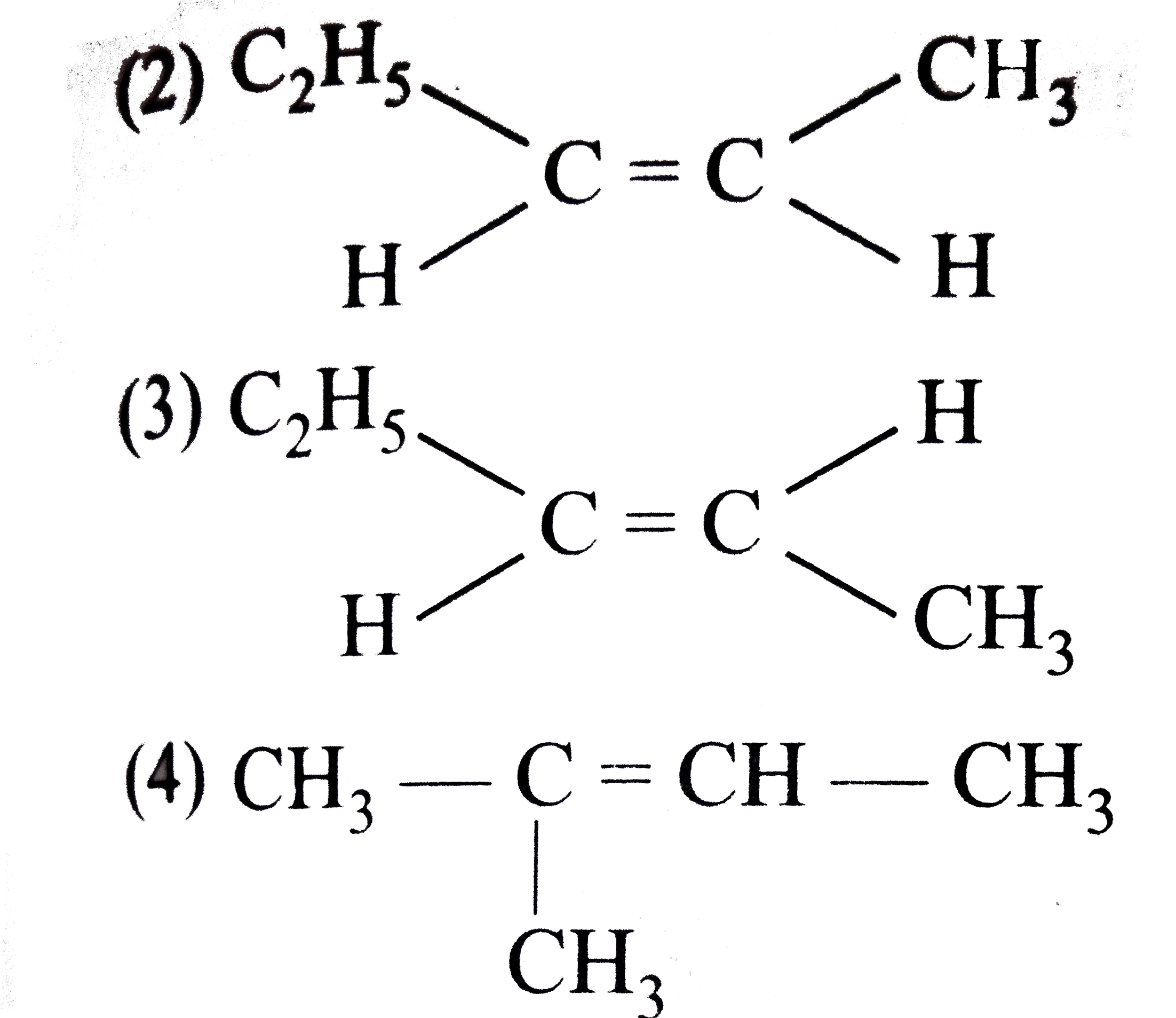 03:57View Solution
03:57View SolutionWhich of the following will have zero dipole moment ?
03:57View SolutionPredict wrong option for stability
08:02View SolutionBut`-2-` can be obtained by electrolysis of an aqueous solution of
08:37View SolutionWhen `1,1,2,2-`tetrabomopropane is heated with zinc powder in alcohol, which is formed `:`
02:07View SolutionThe correct order of alkene reactivity towards an electrophile is mentioned in
02:30View SolutionThe correct order of reactivity towards electrophilic addition reaction `:`
`(II)` `CH_(3)-C-=CH`, `(II)` `CH_(2)=CH_(2)`

 02:22View Solution
02:22View Solution
Compound `'X'` will be `:`03:09View SolutionWhich of the following statements is correct ?
05:00View Solution P(major`)` p` is `:`02:48View Solution
P(major`)` p` is `:`02:48View Solution `P(`major `),P` is `:`02:37View Solution
`P(`major `),P` is `:`02:37View SolutionThe correct relative rate of reaction of the given alkenes for any given electrophiles is
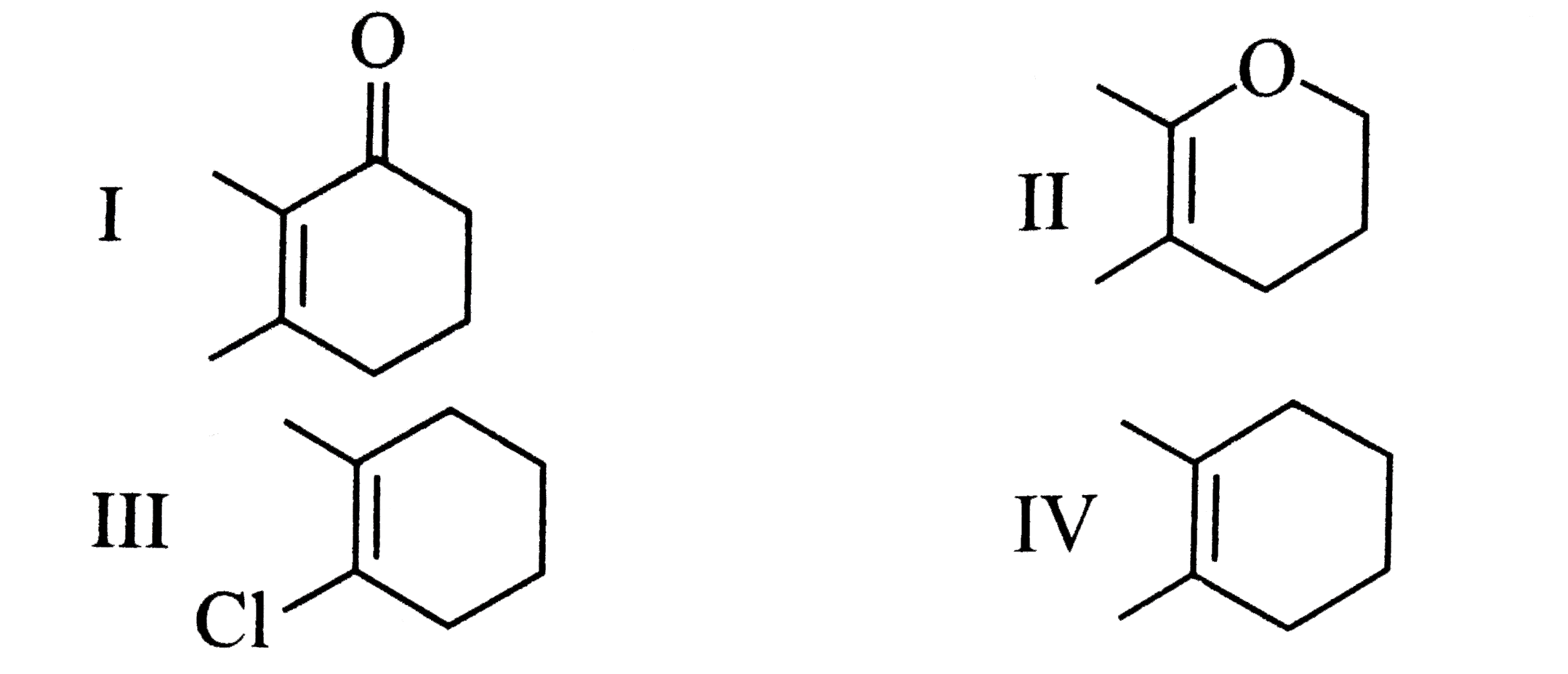 04:15View Solution
04:15View SolutionWhich of the following alkene will give `(P)` on oxymercuration reduction reaction,
 03:53View Solution
03:53View Solution `P.` Identify major product `'P'` is `:`03:02View Solution
`P.` Identify major product `'P'` is `:`03:02View SolutionIn which of the following reactions Markownikoff's rule of addition reaction is followed
02:26View SolutionThe correct order of rate of following reactions is
`CH_(3)-C=C-CH_(3)overset(HBr(1 eq.))underset(eta)rarr(X) overset(HBr(1 eq.))underset(r_(2))rarr (Y)`
`H-C -=C-H overset(HBr(1 eq.))underset(r_(3))rarr(Z)`
`CH_(3)-CH=CH-CH_(3) overset(HBr(1 eq.))underset(r_(4))rarr(W)`06:56View Solution
product `X` by reaction `R.X` and `R` are02:13View SolutionWhich of the following shows least reactivity towards bormination ?
01:55View Solution`CH_(3)CH_(2)CH_(2)C -= CH` `overset (BH_(3),THF)rarroverset(H_(2)O //OH^(-))rarr'X'`
Identify the product `'X':`03:47View SolutionComplete the following reaction
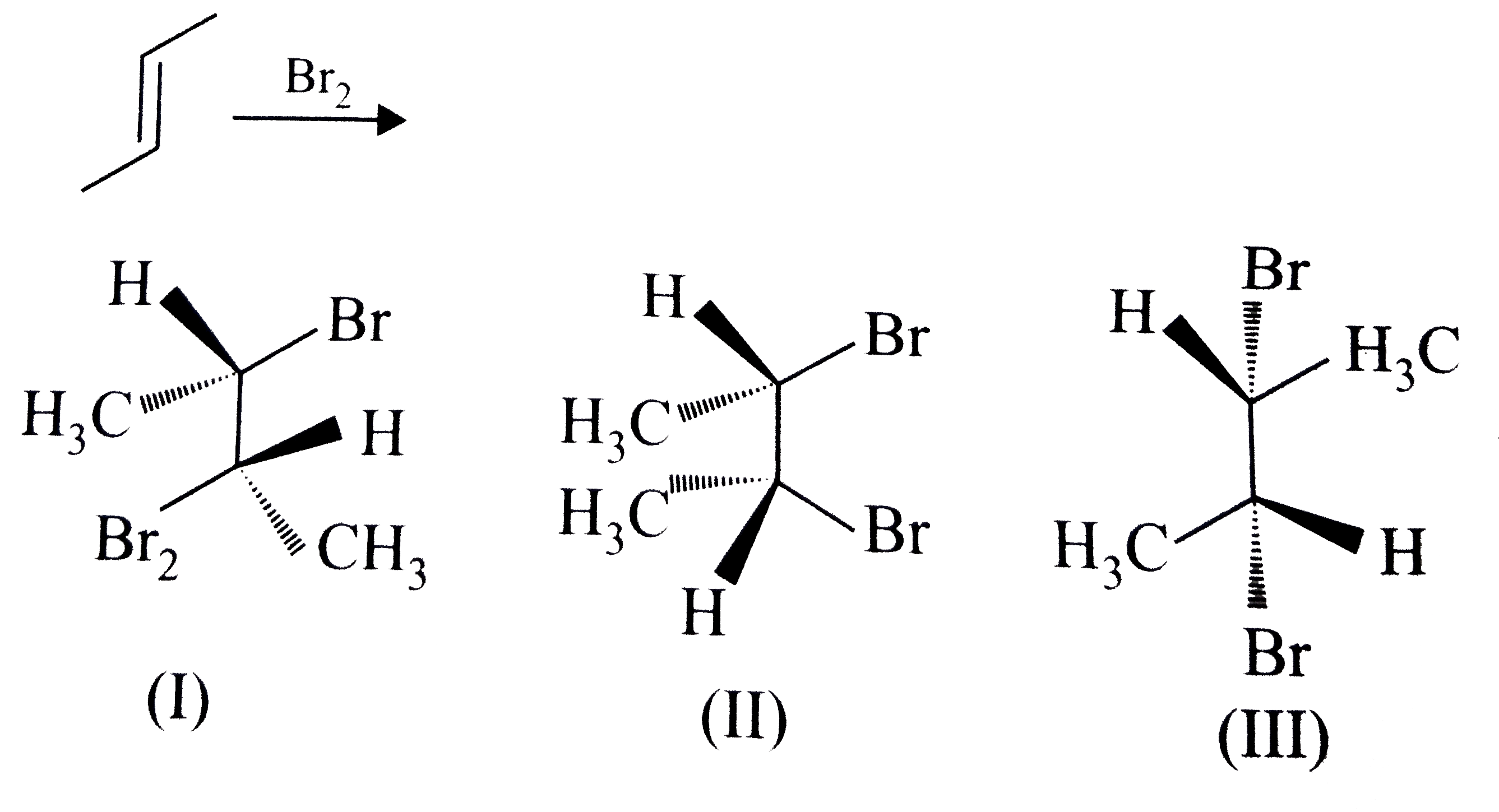 06:31View Solution
06:31View SolutionWhat would be the main product when propene reacts with `HBr` ?
01:26View SolutionWhat would be the main product when propene reacts with `HBr` is presence of benzoyl peroxide ?
03:07View SolutionEthene reacts with `HOCl` to form
01:24View SolutionWhat would be the product when ethen is oxidised with cold dil. `KMnO_(4)` solution ?
01:14View SolutionPropene reacts with `Cl_(20` at `500^(@)C` the products is formed
01:52View SolutionAnti`-` Markovwnikoff's addtion of `HBr` is not observed in
03:01View SolutionAt low temperatures, the slow addition of molecular bromine to `CH_(2)=CH-CH_(2)-=CH` gives
01:44View SolutionReactivity of alkenes towards `HX` decreases in the order
03:04View Solution`CH_(3)CH=CH_(2)overset(DB_(3))underset(H_(2)O // OH^())rarr ` product`X`
`X` is03:35View Solution
A will have configuration01:21View SolutionComplete the following reaction
 02:34View Solution
02:34View Solution `A` , which is true about this reaction ?03:54View Solution
`A` , which is true about this reaction ?03:54View Solution
`A,B` and `C` are03:34View SolutionComplete the following reaction
 03:19View Solution
03:19View SolutionDehydration of `2,2,3,4,4-`pentamethy `1-3-`pentanol gave two alkenes `A` and `B`. The ozonolysis product of `A` and `B` are
View SolutionIdentify `'Z'` in the following reaction series,
`CH_(3)CH_(2)CH_(2)Broverset(NaOH(aq))rarr(X)overset(Al_(2)O_(3))underset(heat)rarr`
`(Y) overset(Cl_(2) //H_(2)O)rarr(Z)`02:22View SolutionPropene reacts with `Cl_(2` at `500^(@)C` the products is formed
01:52View SolutionWhen `HCl` gas is passed through propene in the presence of benzoyl peroxide, it gives `:`
02:54View Solution
Chemical Properties Of Alkanes questions and complete solutions for chapter HYDROCARBONS of A2Z CHEMISTRY (HINGLISH) of Class 11
